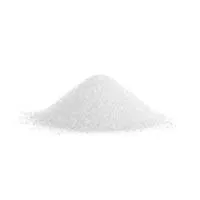
citric acid a preservative
Citric Acid as a Preservative An In-Depth Analysis
Citric acid, a weak organic acid found naturally in citrus fruits, has increasingly become a popular preservative in the food industry. Its ability to enhance flavor while preserving the freshness of food has made it a staple in many ingredients, from beverages to canned goods. In this article, we will explore the properties of citric acid, its uses as a preservative, and the implications for both manufacturers and consumers.
Properties of Citric Acid
Citric acid (C6H8O7) is a colorless, odorless, and crystalline substance with a sour taste. It is classified as a tricarboxylic acid due to its three carboxyl (-COOH) groups. The acid is present in various fruits, particularly lemons and limes, giving them their characteristic tart flavor. Beyond its culinary uses, citric acid possesses unique chemical properties that enable it to act as an effective preservative.
One of the primary functions of citric acid in food preservation is its ability to lower pH. Many harmful bacteria require a neutral or slightly alkaline environment to thrive. By reducing the pH of food products, citric acid creates conditions that inhibit microbial growth, extending the shelf life of perishable goods.
Uses in Food Preservation
Citric acid is commonly used in a variety of food and beverage products. In soft drinks, it not only enhances flavor but also acts as a preservative, preventing the growth of bacteria and fungi. Additionally, it is often added to canned vegetables and fruits, helping to maintain color and prevent spoilage.
Another important application is in dairy products, such as cheese and yogurt, where citric acid aids in curdling milk and controlling spoilage. In baked goods, citric acid can be used to enhance the fermentation process and improve the texture of the final product.
citric acid a preservative

In the realm of meat preservation, citric acid serves as a natural alternative to synthetic preservatives. Its antimicrobial properties make it effective at inhibiting the growth of pathogens, thus ensuring the safety and longevity of processed meats.
Health Implications and Consumer Perception
As a naturally occurring substance, citric acid is generally recognized as safe (GRAS) by the U.S. Food and Drug Administration (FDA). Its presence in many fruits contributes to a healthy diet, and its use as a preservative is often preferred by health-conscious consumers seeking natural alternatives to synthetic additives.
However, some individuals may experience allergic reactions or sensitivities to citric acid, particularly those with citrus allergies. Therefore, proper labeling of food products containing citric acid is essential for consumer safety.
In recent years, there has been a growing trend towards clean-label foods, where consumers prefer ingredients that are easily recognizable and natural. Citric acid aligns well with this trend, as it can be viewed as a better choice compared to artificial preservatives, which may raise concerns about long-term health effects.
Conclusion
Citric acid has proven to be an effective and versatile preservative in the food industry. Its ability to lower pH, inhibit microbial growth, and enhance flavor makes it an invaluable ingredient in numerous products. As consumers become increasingly aware of the ingredients in their food, the demand for natural preservatives like citric acid is likely to rise.
Incorporating citric acid into food preservation not only extends shelf life but also supports a healthier approach to food manufacturing. With its many benefits and applications, citric acid is set to remain a key component in the ongoing evolution of food preservation methods, promoting both safety and quality in our diets.
-
Buy High-Quality Trichloroisocyanuric Acid for Sale | TCCA 90% SupplierNewsAug.30,2025
-
Pure Sodium Dichloroisocyanurate Dihydrate | Powerful DisinfectantNewsAug.29,2025
-
Industrial Chemicals: Quality & Purity for Every IndustryNewsAug.28,2025
-
Nitrile Rubber Honoring Strict Production StandardsNewsAug.22,2025
-
Aspartame Ingredients Honoring Food Safety ValuesNewsAug.22,2025
-
Fertilizer for Balanced Plant NutritionNewsAug.22,2025
-
Cyanide Gold Processing with High Purity AdditivesNewsAug.22,2025
Hebei Tenger Chemical Technology Co., Ltd. focuses on the chemical industry and is committed to the export service of chemical raw materials.
-

view more DiethanolisopropanolamineIn the ever-growing field of chemical solutions, diethanolisopropanolamine (DEIPA) stands out as a versatile and important compound. Due to its unique chemical structure and properties, DEIPA is of interest to various industries including construction, personal care, and agriculture. -

view more TriisopropanolamineTriisopropanolamine (TIPA) alkanol amine substance, is a kind of alcohol amine compound with amino and alcohol hydroxyl, and because of its molecules contains both amino and hydroxyl. -

view more Tetramethyl Thiuram DisulfideTetramethyl thiuram disulfide, also known as TMTD, is a white to light-yellow powder with a distinct sulfur-like odor. It is soluble in organic solvents such as benzene, acetone, and ethyl acetate, making it highly versatile for use in different formulations. TMTD is known for its excellent vulcanization acceleration properties, which makes it a key ingredient in the production of rubber products. Additionally, it acts as an effective fungicide and bactericide, making it valuable in agricultural applications. Its high purity and stability ensure consistent performance, making it a preferred choice for manufacturers across various industries.





